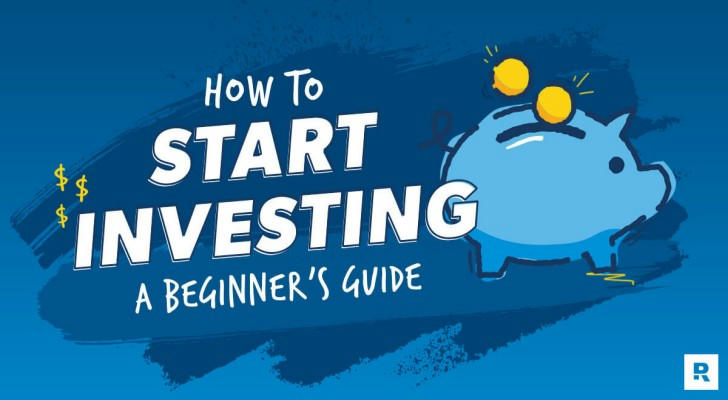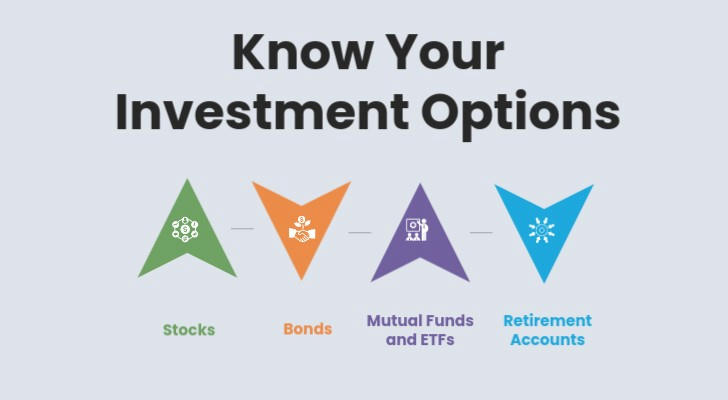From Paycheck to Portfolio: Investing for Beginners 💸📈
Turning your paycheck into a growing investment portfolio may sound intimidating. But the truth is—getting started with investing is easier than many think. You don’t need a degree in finance or a big bank account. With the right approach and a bit of patience, anyone can build long-term wealth.

This guide walks through the basics of investing for beginners, with real-world data and tips to help you take the first step. 🚀
Why Investing Matters 💡
Saving money in a bank account is important. But inflation gradually eats away at the value of those savings. In 2024, U.S. inflation hovered around 3.4%, meaning $100 today would only have the purchasing power of about $96.60 a year later. 🕑
Investing helps outpace inflation and grow wealth. For example, the S&P 500—a stock market index tracking 500 major U.S. companies—has delivered an average annual return of about 10% since its inception in 1926, according to Morningstar. 📊 While there are ups and downs along the way, long-term investors have historically seen strong gains.
How Much Should You Start With? 🪙
Many assume they need thousands of dollars to start investing. That’s a myth. Today’s technology-driven platforms allow people to begin investing with as little as $5 or $10.
Consider this:
If someone invests $100 per month starting at age 25, earning an average annual return of 7%, by age 65 their portfolio could grow to about $240,000, according to Vanguard’s investment calculator. 📈 That’s the power of compound interest—earning interest on both original contributions and past gains.
👉 Starting small but consistently is key.
Know Your Investment Options 🧐

1. Stocks 📈
Buying stock means owning a small piece of a company. Stocks can offer high returns, but they also come with higher risk.
For example, between 2010 and 2020, Apple stock surged more than 1,200%, turning early investors into millionaires. But stock prices can also fall sharply—so diversification is important. 🛡️
2. Bonds 💵
Bonds are essentially loans to companies or governments. In return, they pay regular interest. Bonds are typically less volatile than stocks but usually offer lower returns. They’re useful for balancing risk in a portfolio.
3. Mutual Funds and ETFs 📊
Mutual funds and Exchange-Traded Funds (ETFs) allow investors to pool their money and invest in a broad range of stocks and bonds.
ETFs like SPDR S&P 500 ETF (SPY) provide exposure to the entire U.S. stock market in a single investment, making them a popular choice for beginners.
4. Retirement Accounts 🏖️
Accounts like 401(k)s and IRAs offer tax advantages while helping save for retirement. In 2025, the contribution limit for a 401(k) is $23,000 for those under age 50, according to the IRS. Maximizing retirement accounts is a smart long-term strategy.
Understanding Risk and Reward ⚖️
Every investment carries some level of risk. Stocks may fluctuate, bonds may default, and even diversified portfolios can experience temporary losses.
The key is knowing your personal risk tolerance:
• If losing 20% of your portfolio in a market downturn would keep you up at night 🌙, a conservative allocation (more bonds, fewer stocks) may be suitable.
• If you can stay invested for decades and tolerate swings, a higher stock allocation may offer better growth. 🌱
Diversification—spreading money across various assets—helps reduce risk. No one should put all their eggs in one basket 🧺.
The Power of Time in the Market 🕰️
Timing the market—trying to buy low and sell high—is notoriously difficult. A study by J.P. Morgan showed that missing just the 10 best days in the stock market over a 20-year period could slash returns by more than 50%. 😮
Instead of trying to time the market, staying invested consistently tends to yield better results. A long-term mindset is an investor’s best ally. 💪
Real-Life Success Story 🌟
Meet Maria, a 29-year-old teacher from Texas. In 2015, she began investing $150 per month in a diversified index fund. At first, her portfolio barely grew. Then the power of compounding kicked in.
Today, after 10 years, her investment account exceeds $30,000—and she’s still contributing. Maria didn’t need to be an expert. She automated her contributions and let time do the heavy lifting. 📆
Her advice: “Start now, even if it feels small. Your future self will thank you.” 🙏
Avoid Common Pitfalls 🚧
• Chasing hot stocks: Just because a stock made headlines doesn’t mean it’s a good buy. Focus on long-term quality.
• Ignoring fees: Investment fees can quietly eat away at returns. Opt for low-cost funds when possible.
• Trying to get rich quick: Investing is a marathon, not a sprint. 🏃 Beware of get-rich-quick schemes.

Getting Started Today 🚀
Ready to take the first step? Here’s a simple starter plan:
1. Build an emergency fund of 3–6 months’ expenses before investing.
2. Open an investment account through a reputable brokerage platform. 🏦
3. Set clear goals—retirement, home purchase, education savings, etc. 🏠🎓
4. Automate contributions to ensure consistent investing. 🔄
5. Diversify and rebalance your portfolio over time.
Final Thoughts 💭
Turning a portion of each paycheck into a growing portfolio is one of the smartest financial moves anyone can make.
Start small, stay consistent, and let time work in your favor.
The journey from paycheck to portfolio is not about luck—it’s about building habits that lead to lasting wealth. 🌳
Your future self will be glad you started today. 🙌
